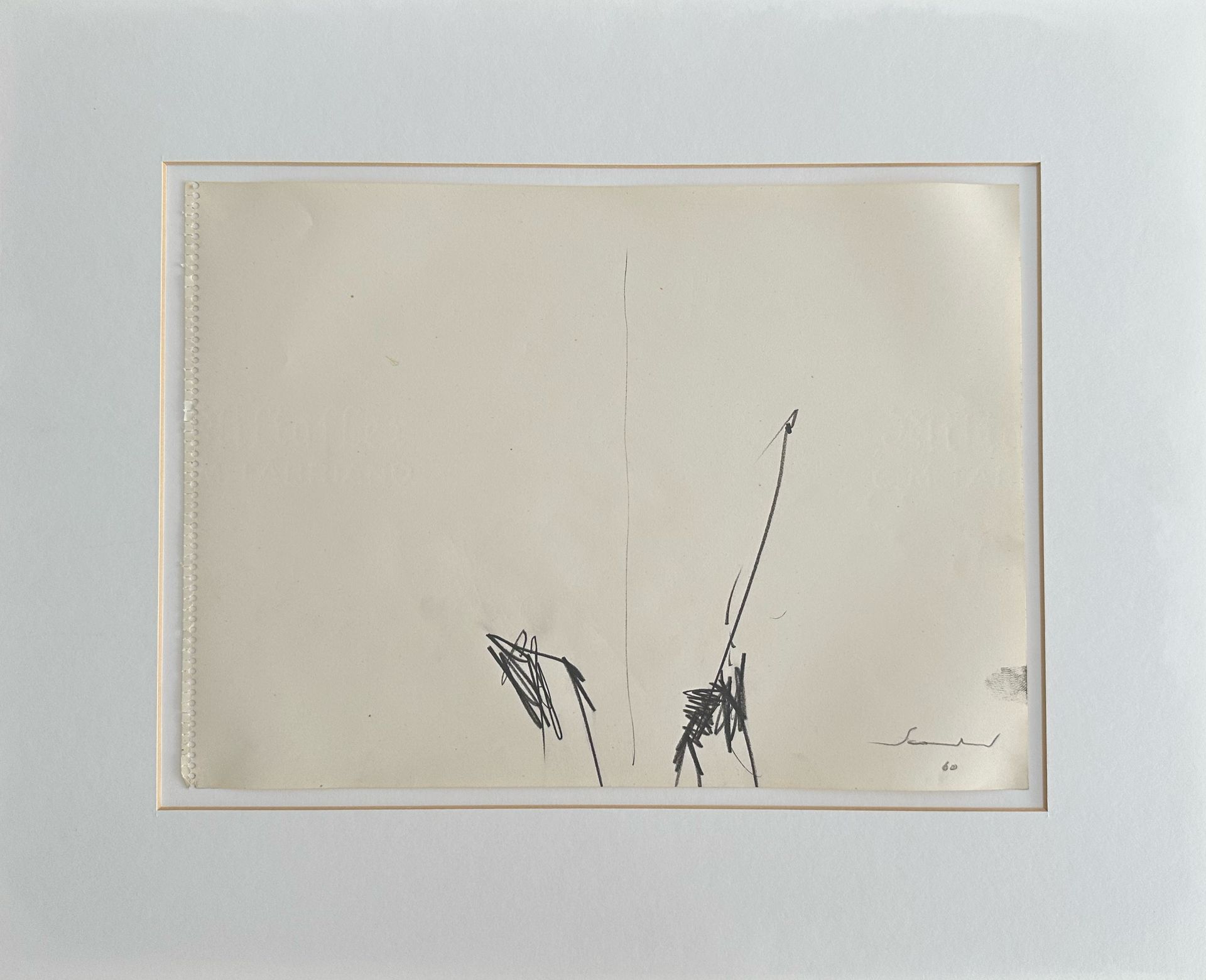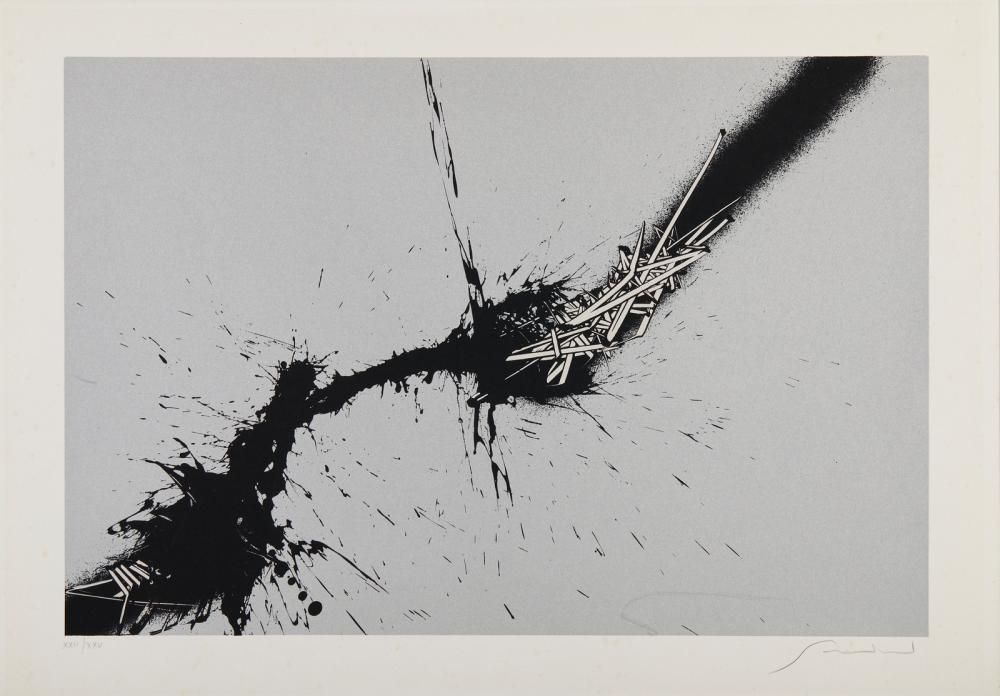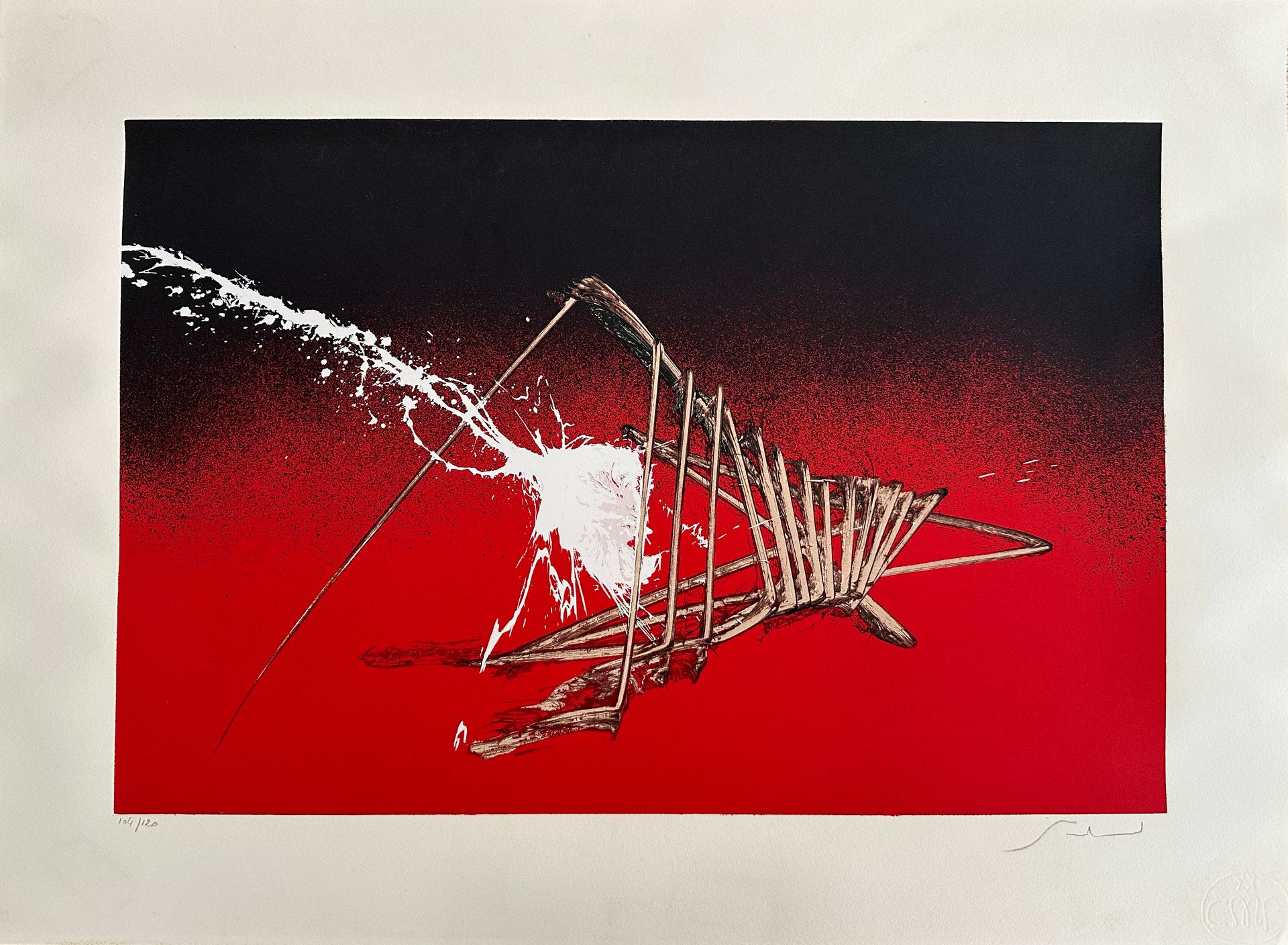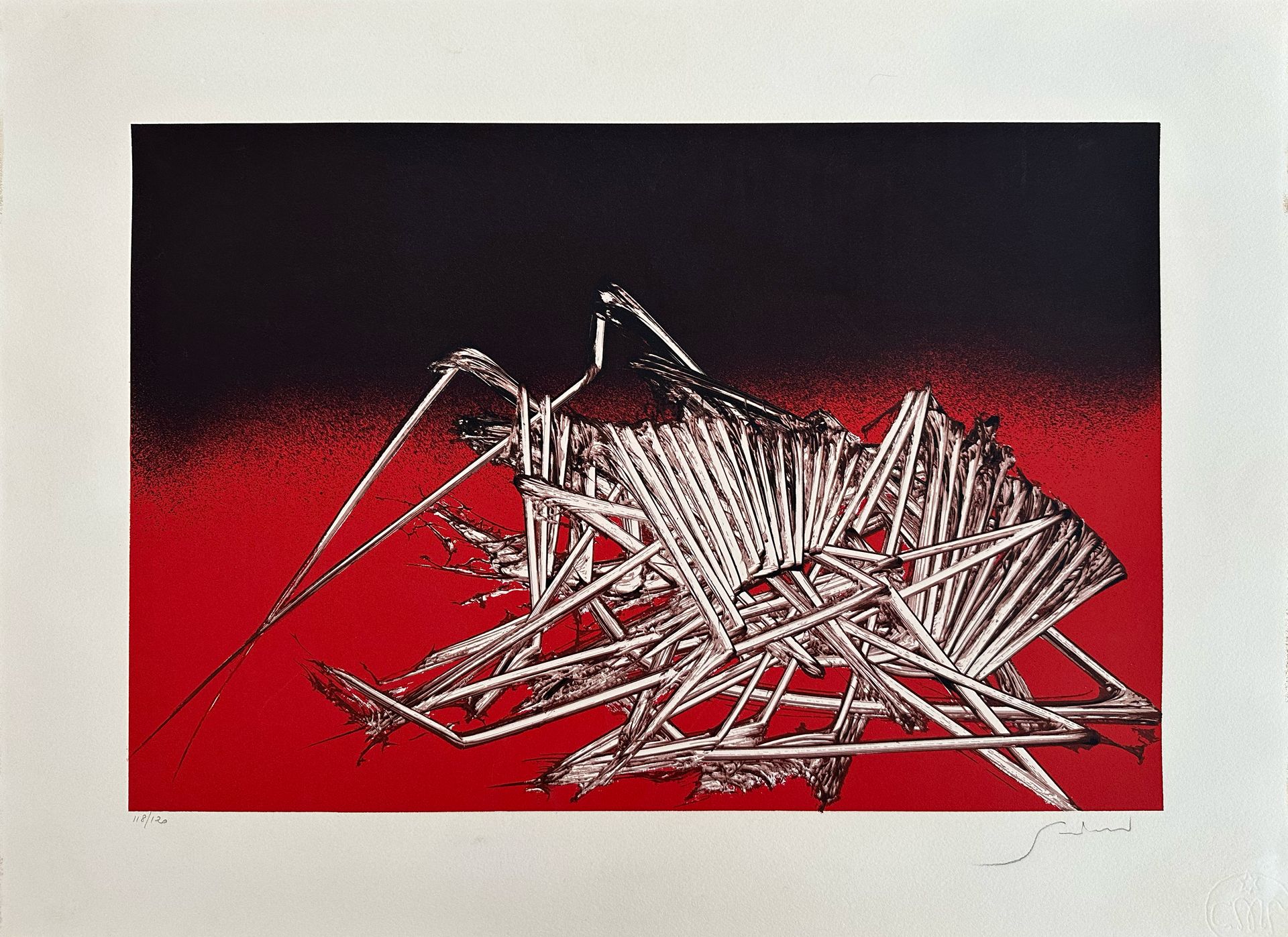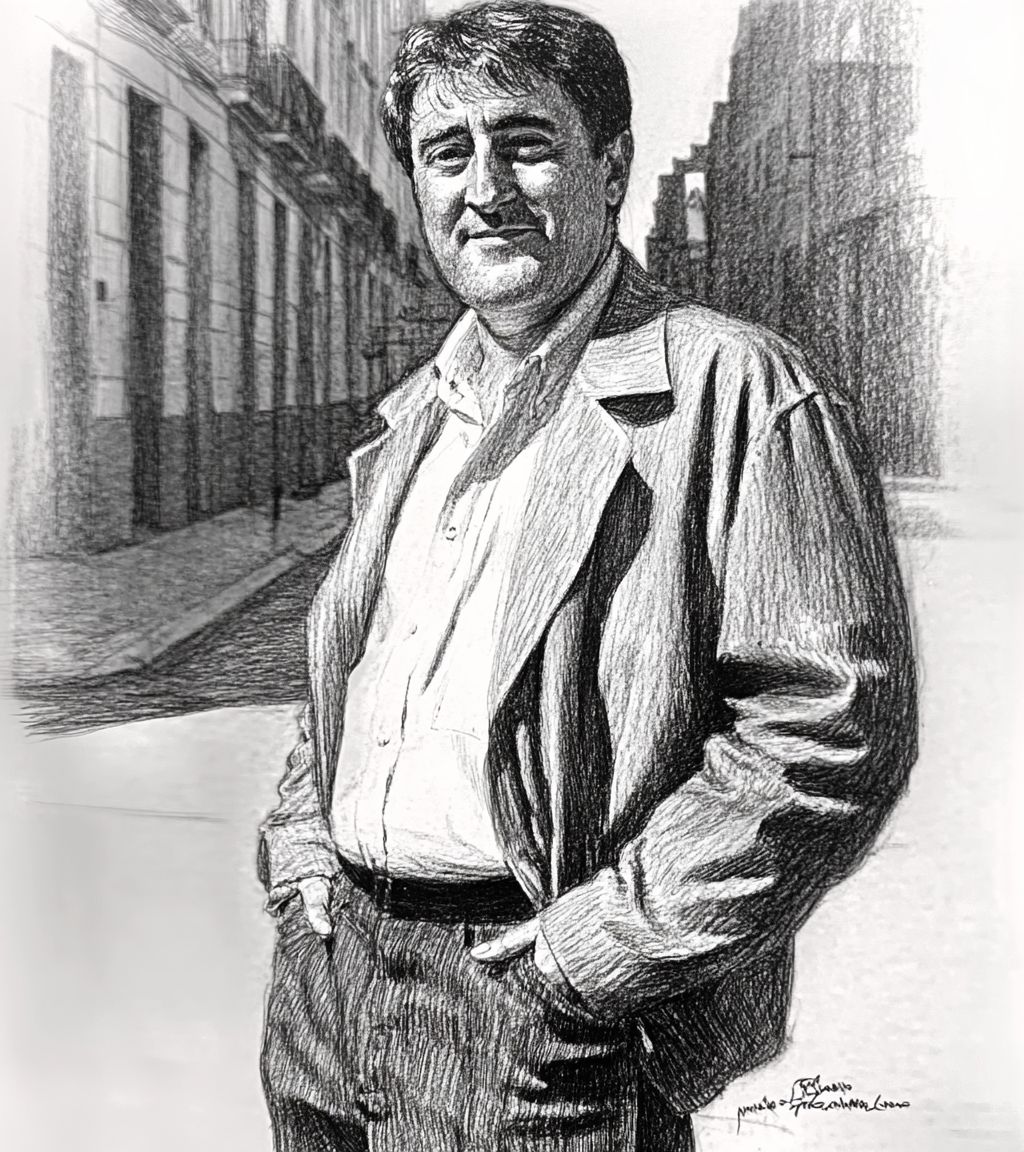
Emilio Scanavino
Emilio Scanavino began his artistic training at the Nicolò Barabino Art School in 1938 and held his first exhibition in Genoa in 1942. After briefly studying architecture in Milan, he traveled to Paris in 1947, where he encountered the avant-garde literary and artistic circles. These experiences, along with connections to artists like Wols and Camille Bryen, shaped his turn toward abstraction. By the early 1950s, Scanavino was exhibiting regularly in Venice and London and had established his studio in Milan.
Scanavino’s work evolved from figuration to a deeply personal abstract style marked by recurring symbols, especially the knotted or tangled line motif that became his visual signature. His paintings feature layers of gesture, linear patterns, and muted tones, often punctuated by expressive red markings. These compositions convey a sense of psychological depth and existential reflection. Though his work is linked to the Italian Arte Informale movement, it also shows parallels to abstract expressionism and lyrical abstraction in postwar Europe.
Scanavino represented Italy multiple times at the Venice Biennale. Major retrospectives were held at Kunsthalle Darmstadt in 1973, followed by Palazzo Grassi in Venice and Palazzo Reale in Milan in 1974. His work has been shown internationally in cities such as London, Paris, Hamburg, Copenhagen, and Philadelphia, and is held in the collections of major museums including the Centre Pompidou (Paris), SFMOMA (San Francisco), MART (Rovereto), Museo del Novecento (Milan), GAMeC (Bergamo), and Museo Tamayo (Mexico City).
Collected by major institutions and notable private collectors:
— National Gallery of Art, Washington, D.C.— Centre Pompidou
— GAM Torino
— MART Rovereto
Notable sales and auction records:
— Trattenuto (dall'Alfabeto senza fine), EUR 320 thousand at Farsetti Arte, Prato, 2007— Il trionfo della morte, EUR 140 thousand at Il Ponte Auction House, 2018
— Atto presente, EUR 118,7 thousand at Dorotheum, Vienna, 2016
Artworks and Paintings
Biography and Artistic Career Highlights
Emilio Scanavino was born on February 28, 1922, in Genoa, Italy, into a family of craftsmen. His childhood was spent in a working-class neighborhood, where he showed an early interest in drawing. As a teenager, he studied at an art school, copying works of the old masters and learning academic drawing. This education later became the foundation for his explorations in modern art.
1938 — enrolled at the Art Lyceum in Genoa, where he studied painting and sculpture techniques.
1942 — took part in his first exhibition in Genoa, presenting paintings in a traditional style.
1944 — joined a circle of Ligurian artists and intellectuals, where he became acquainted with contemporary art movements.
1946 — held his first solo exhibition in Milan; elements of a new artistic language were already visible in his work.
1947 — traveled to Paris, where he encountered the works of Picasso and other figures of the European avant-garde. This experience had a decisive influence on the development of his style.
1950s — moved toward abstract painting, with “knots” and graphic structures becoming central elements. His language was based on the interplay of gesture, line, and color.
1951 — participated in the Venice Biennale, where his works received positive critical attention.
1954 — signed a contract with the Carlo Cardazzo Gallery, which enabled him to exhibit actively in Italy and abroad.
1958 — took part in the exhibition «Five Italian Painters» in London, which opened the way for his international career.
1960s — a period of creative flourishing: he produced a series of paintings with characteristic interwoven lines and forms symbolizing inner tension and drama. His works were exhibited across Europe and the United States.
1966 — solo exhibition in Cologne; in the same year, he was recognized as one of the leading figures of Italian abstraction.
1970s — created large-format works, producing series in which lines transformed into dramatic knots, with planes of color emphasizing expression.
1973 — participated in exhibitions in Tokyo and Osaka, expanding his international reputation.
1980s — continued working actively in his studio, further developing his abstract symbolism by combining painting and graphic work.
On November 28, 1986, Emilio Scanavino died in Milan. His legacy became a vital part of the Italian neo-avant-garde: he succeeded in merging the expression of gestural abstraction with a philosophical reflection on form and space. His «knots» and symbolic lines remain recognizable emblems of postwar European art.

